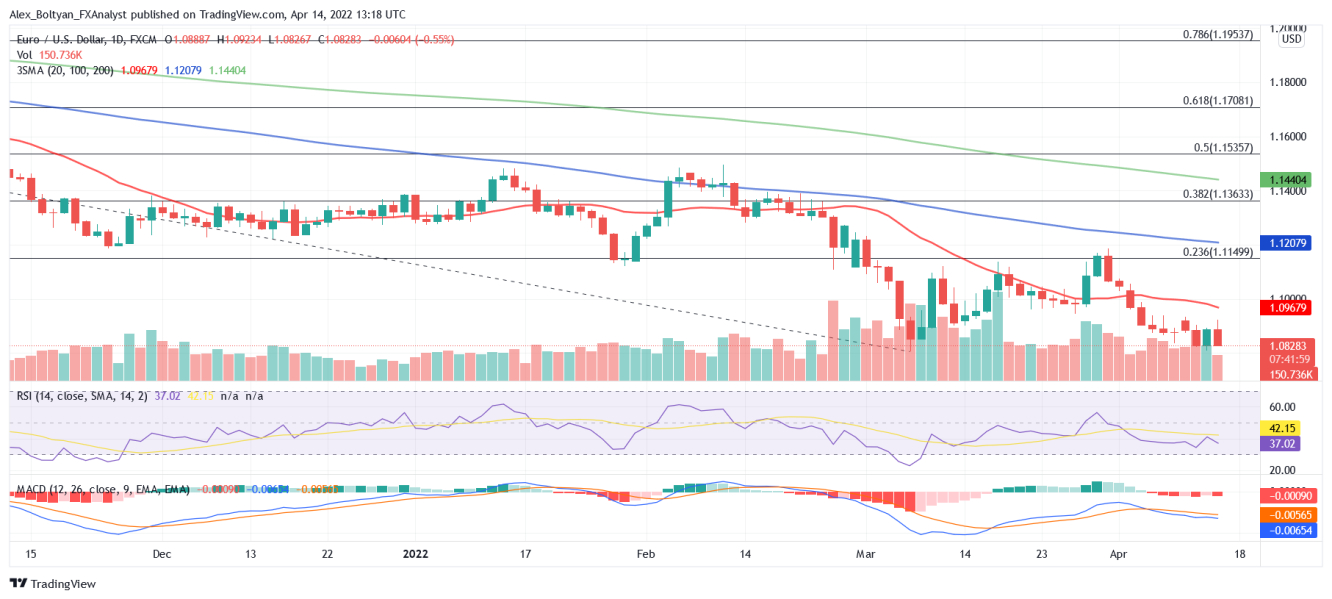The EUR/USD reversed early gains and turned negative for the day following the European Central Bank's decision on monetary policy.
The ECB left rates unchanged, as widely anticipated, and ratified that its Asset Purchase Programme (APP) will end in the third quarter, saying that the calibration of net purchases for the third quarter will be data-dependent and reflect the Governing Council’s evolving assessment of the outlook.
At a press conference, ECB President Christine Lagarde noted that the risk to inflation outlook is tilted to the upside in the near term has intensified lately.
The euro weakened as a knee-jerk reaction as investors expected a more hawkish approach from the central bank. The EUR/USD slumped and broke below March low to hit its lowest in two years at 1.0757.
Meanwhile, the U.S. released retail sales data, which showed a merely 0.5% increase in March, slightly below the 0.6% forecasted, while initial jobless claims rose to 185,000 last week, above the 171,000 expected.
From a technical perspective, the EUR/USD holds a bearish short-term bias, as shown by indicators in the daily chart. The MACD remains in negative territory, while the RSI is gaining a downward slope, showing increasing selling pressure.
At the same time, the price holds well below its main moving averages, with the 20-day SMA offering immediate resistance at the 1.0965 zone. Having broken below the 1.0805 area, the next support is seen at April’s 2020 low of 1.0727 and then the 1.0700 psychological level.
On the other hand, if the EUR/USD manages to regain the 20-day SMA, next resistances are seen at the 1.1000 psychological level and the 1.1070 zone, ahead of the critical 1.1150 23.6% Fib retracement of the May 2021 - March 2022 fall. A recovery above this latter should alleviate the short-term bearish pressure.


